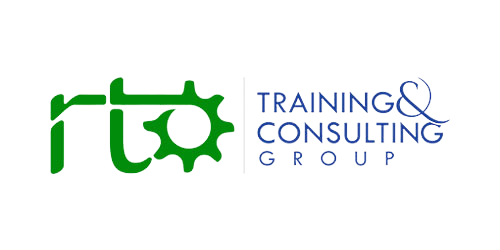From Prompts to Purpose: The New AI Frontier in Education
Artificial Intelligence is reshaping the Australian vocational education and training (VET) landscape in ways few could have predicted even five years ago. Across Registered Training Organisations (RTOs), compliance offices, and digital learning environments, AI systems are now creating learning content, mapping qualifications, responding to ASQA audits, and supporting trainers in personalising education delivery.
However, as these systems evolve, it has become increasingly clear that the quality of AI output is not simply a matter of technology or algorithms — it is a matter of engineering. Two critical disciplines are now defining the sophistication and reliability of AI in education: prompt engineering and context engineering.
Prompt engineering, the art of crafting precise and effective input for large language models (LLMs), has become the foundation of every interaction between humans and machines, but as systems grow more complex and integrated into the VET ecosystem — with memory, policies, data repositories, and dynamic retrieval pipelines — a broader discipline has emerged: context engineering.
Context engineering extends beyond the prompt itself, building the architecture, data flows, and memory systems that surround an AI model. It ensures that the model not only understands the user’s request but also operates within the relevant educational, regulatory, and institutional framework.
In this article, we will explore how both prompt and context engineering are transforming AI systems, how retrieval-augmented generation (RAG) and agentic frameworks are powering smarter decision-making, and why these concepts are essential for Australian educators and compliance professionals in the years ahead.
Prompt Engineering: Crafting the Input that Shapes the Output
At its core, prompt engineering is about communication — giving an AI model the right instructions, phrased in a structured and purposeful way, so that it produces accurate, relevant, and contextual responses.
For RTOs, prompt engineering can be applied in countless ways: generating audit-ready reports, mapping qualifications to units of competency, simulating trainer assessments, or even producing ASQA-compliant marketing descriptions.
Effective prompt engineering relies on several techniques that improve both precision and reasoning:
Role Assignment involves telling the model who it is supposed to be. For example, when designing an AI to support compliance reviews, assigning it the role of “ASQA auditor” ensures that its responses are grounded in regulatory language and risk frameworks rather than creative speculation.
Few-Shot Examples provide the model with demonstrations of the desired output format. By giving it a few sample compliance reports, for instance, the model learns how to produce summaries that meet the expectations of VET compliance teams.
Constraint Setting defines boundaries. When building AI systems for RTO operations, constraints might include Australian English usage, the Standards for RTOs 2025, or the ESOS National Code.
Chain-of-Thought Prompting encourages the model to “think aloud,” explaining its reasoning step by step. This is particularly useful in auditing, risk management, and assessment validation, where transparency and traceability are critical.
Through these techniques, prompt engineering provides the structure — but structure alone is not enough. As AI systems take on more sophisticated roles in education, they must not only respond correctly to input but also understand the broader context in which that input exists. That is where context engineering begins.
Context Engineering: Building the System Around the Model
Context engineering takes the next step. It is the discipline of managing all the information, metadata, and infrastructure that surrounds the AI’s reasoning process. In education technology, this means integrating the AI with systems that store policy documents, training packages, learner data, and compliance frameworks.
A prompt might ask an AI:
“Generate a learner support strategy for an international student.”
But without context — the student’s visa status, the course level, the provider’s CRICOS obligations, and the applicable National Code provisions — the AI’s response will be generic and possibly non-compliant.
Context engineering fixes this by ensuring the AI automatically retrieves and understands the right information before it responds. This includes:
-
System Instructions that define the AI’s operational role (e.g., “Always refer to Standards for RTOs 2025 when discussing compliance”).
-
Message History maintains continuity in multi-step tasks such as assessment moderation or learner progression tracking.
-
Tool Descriptions and APIs, linking the AI to RTO databases, LMS systems, and audit management platforms.
-
Knowledge Retrieval Mechanisms, using vector databases or RAG pipelines to pull in relevant regulatory or organisational information dynamically.
-
Policy and Data Integration, so that every AI response is automatically aligned with internal frameworks, from student support to WHS compliance.
Context engineering is therefore the backbone of intelligent automation. It ensures that AI systems in education don’t just produce fluent answers — they produce accurate, compliant, and contextually relevant ones.
When Prompt Engineering Isn’t Enough: The Hotel Booking Analogy
Imagine an AI agent named “Graeme,” designed to assist a training manager with travel bookings for professional development workshops. The manager prompts the AI:
“Book me a hotel in Melbourne next week.”
Graeme dutifully selects a hotel — but one far from the event venue and beyond the company’s travel budget. The issue was not with the AI’s linguistic understanding; it followed the prompt correctly. The failure lay in missing context — the RTO’s travel policy, cost thresholds, and event location.
Now, imagine the same agent equipped with context engineering. Before making the booking, Graeme retrieves the RTO’s approved vendor list, checks the staff member’s per diem allowance, and confirms the event address. This time, the booking aligns perfectly with organisational requirements.
In the VET sector, similar failures can occur if AI systems generate learning resources without referencing the relevant training package, or prepare audit evidence without considering the latest regulatory and legislative guidelines. Context engineering prevents these errors by embedding regulatory awareness directly into the AI’s operating environment.
Memory, State, and RAG: Sustaining Context in Agentic AI
As AI evolves from static models into dynamic, multi-step agents, memory and state management become critical.
Short-Term Memory helps AI systems summarise recent interactions, such as a series of compliance review questions or learner assessments. It ensures continuity, preventing the model from losing track of a multi-phase task.
Long-Term Memory, often powered by vector databases, enables the system to retain important patterns — for example, an RTO’s preferred assessment templates or common non-compliance themes from previous audits.
Retrieval-Augmented Generation (RAG) enhances this memory by allowing the AI to access external knowledge sources in real time. Instead of relying solely on pre-trained information, a RAG-enabled AI can retrieve the latest version of a qualification file, a government policy update, or a published ASQA determination.
In an agentic framework, these systems operate continuously, recalling context, managing state, and adapting to evolving requirements. For example, an agentic compliance assistant could:
-
Retrieve the organisation’s Quality Assurance Policy.
-
Compare its clauses with the latest ASQA practice guides.
-
Identify discrepancies and suggest updates.
Each of these steps requires context awareness, memory persistence, and dynamic retrieval — capabilities built not through prompt design alone but through robust context engineering.
Techniques for Effective Context Management in Education AI
Effective context engineering in the Australian VET sector involves balancing precision and efficiency. With large models constrained by token limits, educators and developers must prioritise what information is most relevant to the AI at each step.
Some proven methods include:
Structured Summarisation – Condensing training package content or audit reports into concise summaries that preserve key details but fit within token limits.
Relevance-First Selection – Ensuring that when an AI references contextual data, it retrieves only relevant policies, not the entire library of compliance documentation.
Context Phasing – Delivering context in stages during multi-step processes. For example, during assessment validation, the AI first analyses the assessment instrument, then accesses competency standards, and finally reviews feedback logs.
Automated Relevance Filtering – Using ML-driven filters to rank policy or procedural documents by relevance, ensuring the AI operates on high-value information.
Dynamic Role Assignment – Adjusting the AI’s persona mid-process. In one stage, it may act as an instructional designer; in another, as a compliance officer.
These approaches not only make AI systems more efficient but also align with the Standards for RTOs 2025, which emphasise fit-for-purpose, evidence-based, and quality-assured processes.
Building AI Literacy in the VET Sector
The future of education is not simply about using AI — it is about understanding it. For RTO leaders, trainers, and compliance professionals, developing AI literacy means understanding how prompts, context, and data governance intersect.
Prompt engineering skills enable educators to generate accurate and compliant content. Context engineering knowledge empowers them to design systems that can interpret policies, integrate learner data securely, and maintain contextual integrity across multiple workflows.
This literacy directly supports Quality Area 2 under the revised Standards for RTOs 2025 — Student Support and Wellbeing. By embedding contextual awareness in AI-driven student systems, RTOs can personalise learning support, identify risk indicators early, and maintain continuous compliance across diverse learner cohorts.
AI literacy also ties into data privacy and ethical governance. As context-rich systems rely on sensitive information, RTOs must ensure compliance with the Privacy Act 1988, the ESOS National Code, and the Australian Consumer Law when developing or deploying AI solutions.
Beyond Prompt and Context: Expanding AI Engineering Disciplines
While prompt and context engineering form the foundation of intelligent AI systems, they exist within a larger ecosystem of interconnected disciplines shaping education technology today.
Data Engineering underpins every AI initiative, ensuring that input data — from enrolment records to assessment evidence — is accurate, de-identified where necessary, and properly structured.
Model Engineering focuses on designing or fine-tuning AI architectures that are fit for educational purposes, ensuring fairness, bias mitigation, and compliance alignment.
Deployment Engineering ensures AI systems in RTOs operate securely, reliably, and at scale, often through cloud infrastructure that meets data residency and cyber standards.
Explainability Engineering enables transparent reasoning, allowing RTO staff and regulators to trace AI decisions and ensure they meet audit requirements — an essential feature for ASQA validation.
Orchestration Engineering designs agentic frameworks that coordinate multiple AI systems — such as content generation, learner analytics, and compliance monitoring — through shared context and memory.
Human-AI Collaboration Engineering defines protocols where human experts and AI systems work together. For example, AI might pre-screen assessment evidence, while human auditors verify and endorse the final recommendations.
These disciplines collectively define the architecture of the modern educational AI ecosystem, ensuring that automation enhances — not replaces — human judgment, compliance, and care.
The Australian Imperative: Context Engineering for Compliance and Innovation
Australia’s VET sector operates within one of the world’s most intricate regulatory environments. Each decision — from course design to student welfare — intersects with multiple layers of legislation, including the Standards for RTOs, the National Code, and the Australian Qualifications Framework.
In this context, AI must not only be intelligent but also trustworthy. Context engineering is the key to achieving that trust.
Imagine an AI agent integrated within a CRICOS provider’s management system. When asked to prepare a student intervention plan, it automatically retrieves attendance records, visa conditions, and the provider’s intervention policy. It then drafts a compliant plan aligned with ASQA and Department of Home Affairs requirements — reviewed, of course, by a human compliance officer.
This is the future of education technology: human oversight, powered by contextually intelligent systems.
Moreover, context engineering opens new possibilities for continuous improvement. RTOs can use AI to analyse large datasets from student feedback, audit outcomes, and completion rates — identifying systemic issues and predicting future compliance risks before they occur.
In short, context engineering is not just a technical concept; it is a governance tool that enhances transparency, accountability, and performance in Australia’s education and training system.
The Future of Agentic Education in Australia
The future of Australian education will be shaped not by technology alone but by the principles guiding its use. Agentic AI systems — those capable of autonomous reasoning, context awareness, and ethical decision-making — are set to revolutionise how RTOs manage compliance, design curricula, and support learners.
But the lesson from prompt and context engineering is clear: the intelligence of an AI system is only as strong as the context it understands.
By investing in AI literacy, embracing retrieval-augmented generation, and adopting context-driven frameworks, Australia’s VET leaders can ensure that the next generation of educational technology is not only efficient but also equitable, compliant, and deeply human-centred.
The real promise of context engineering lies in this balance — between automation and authenticity, between precision and empathy, between intelligence and integrity.
In a world racing toward digital transformation, context engineering ensures that education remains what it has always been at its best: deeply connected to people, purpose, and progress.


































